Double opt-in is an email subscription method. It means that users are added to your mailing list only after they confirm the subscription two times. With this method, you’ll get high-quality leads and better email deliverability.
Building a mailing list using a subscription form can seem like a tedious process, but it is a must for your email marketing strategy. When choosing a list building technique, you should decide which email subscription method to use — single opt-in or double opt-in. Each of them has its own peculiarities as well as advantages and disadvantages. Read on to discover the difference between single opt-in and double opt-in.
Single Opt-in vs Double Opt-in
The difference between these two methods lies in the number of steps users must take to subscribe. Hence, the choice will influence the quality of your mailing list, email deliverability, and number of conversions.
Single opt-in means that a user joins your list right after they provide their email address and click “Subscribe.” So, this is a one-step process that doesn’t require users to go to the inbox to confirm their subscription.
Look below to see how the single opt-in subscription process looks. Users enter their email address.
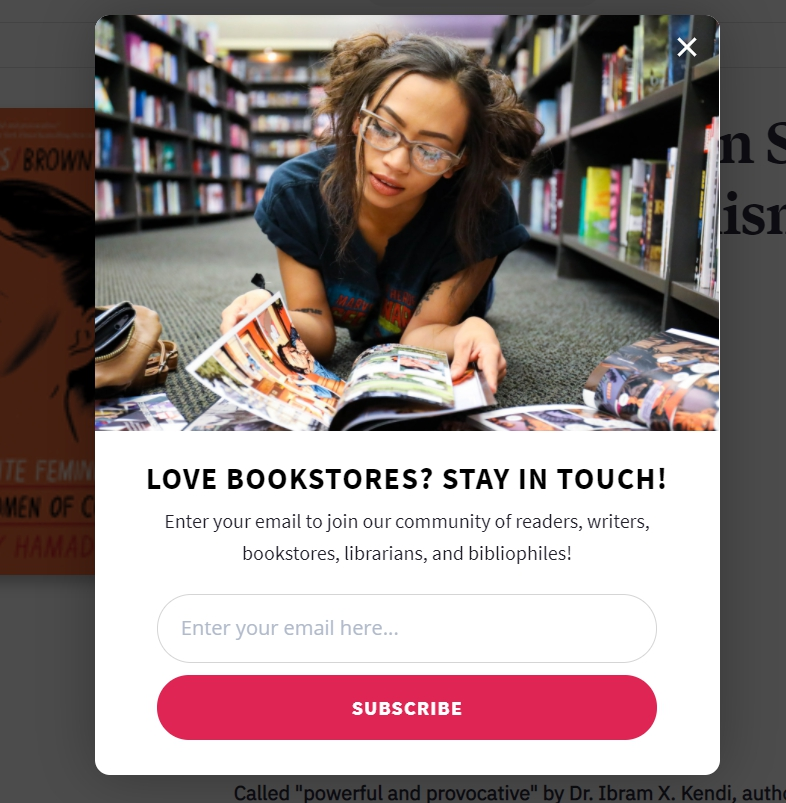
Then, they submit the address and immediately join the mailing list.
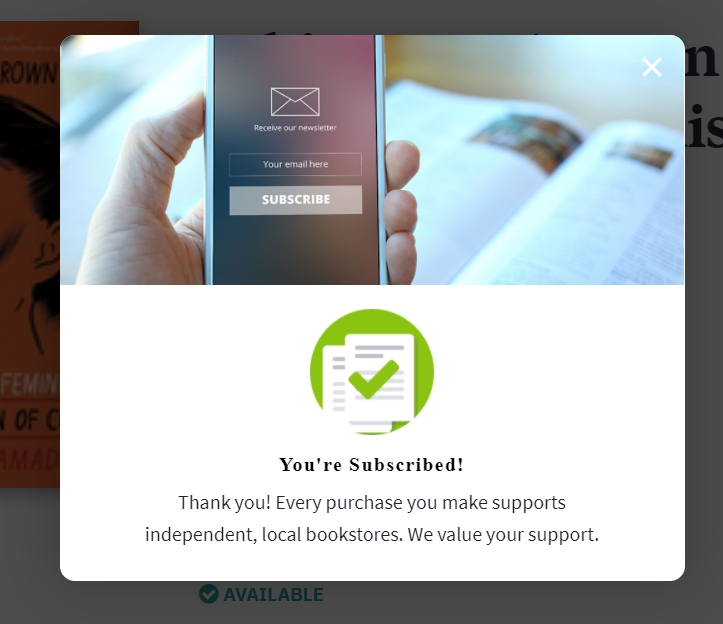
A double opt-in method implies a two-step subscription process. After users leave their email address in a form, they receive an email with a confirmation link. If they follow it, they join a company’s mailing list.
Look at the example of the double opt-in form below. After users leave their email address, they’re asked to verify it.
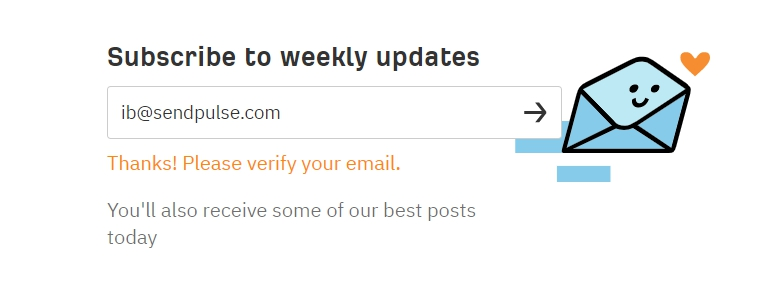
Immediately, they receive a confirmation email. The brand asks them to follow the link if they want to subscribe or delete the email if it was received by mistake.
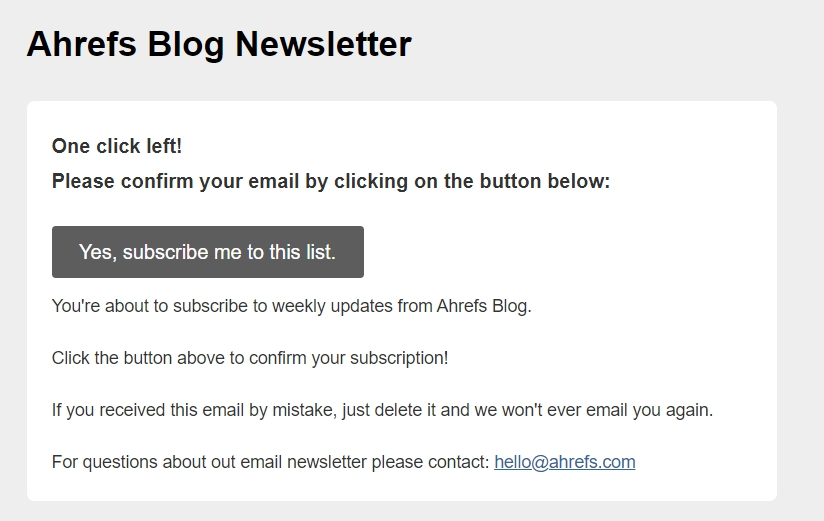
Advantages and disadvantages of double opt-in
Double opt-in subscription forms have several significant advantages over single opt-in forms. Check them out below.
Advantages
- Quality leads. If users went through two-step verification, you can be sure they’re aware of what they’re doing and are really interested in your brand.
- High email deliverability. The double opt-in method helps marketers eliminate spam traps, emails with typos, and their competitors’ attacks aimed at harming the sender’s reputation. With this method, you’ll collect a high-quality mailing list and send campaigns to engaged subscribers that will result in high email deliverability, open rates, and overall email performance.
- Compliance with GDPR regulations. Despite the fact that double opt-in is not required by the GDPR regulations, it won’t be superfluous. Use it as extra proof that you send legal campaigns.
Still, the double opt-in method has some minor disadvantages. Before creating a subscription form, you should be aware of them.
Disadvantages
- Slow mailing list growth. Since the subscription process takes two steps, users need more time to join your list. Besides, some of them can forget to check their inbox. As a result, it takes much longer to collect a list.
- Lower conversions. Some users interested in your blog or products may not have time to check the inbox or simply give up halfway because of this two-step process. So, you should realize that you’ll get lower conversions.
Now, that you know the peculiarities of each method, it’s time to choose one and start collecting leads. No matter which method you like, SendPulse allows marketers to create both forms without any technical skill for free. Follow the instructions below.
How to Create a Double Opt-in Subscription Form
- Register with SendPulse
- Choose a subscription form type
- Design your subscription form
- Select the necessary subscription method
Creating a subscription form won’t take you more than 30 minutes with the SendPulse Subscription Form Builder. You only need to drag and drop the necessary elements to your form, and design them to your liking.
Step 1: Register with SendPulse
If you don’t have an account yet, create it. You can sign up with Google or Facebook.
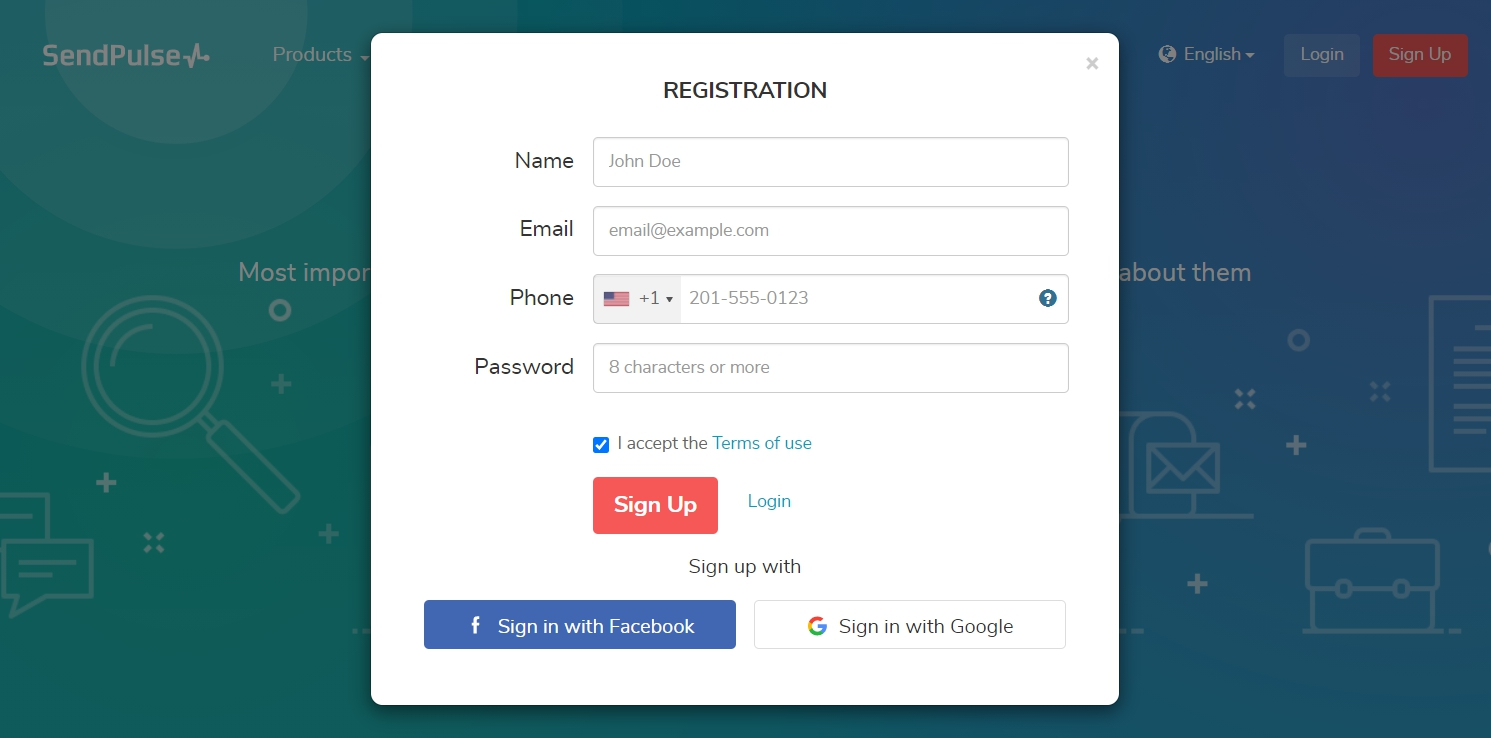
Step 2: Choose a subscription form type
In your account, navigate to “Subscription forms,” click “Create a new form.” Then, choose the form you like and select a mailing list where all the addresses will be added.
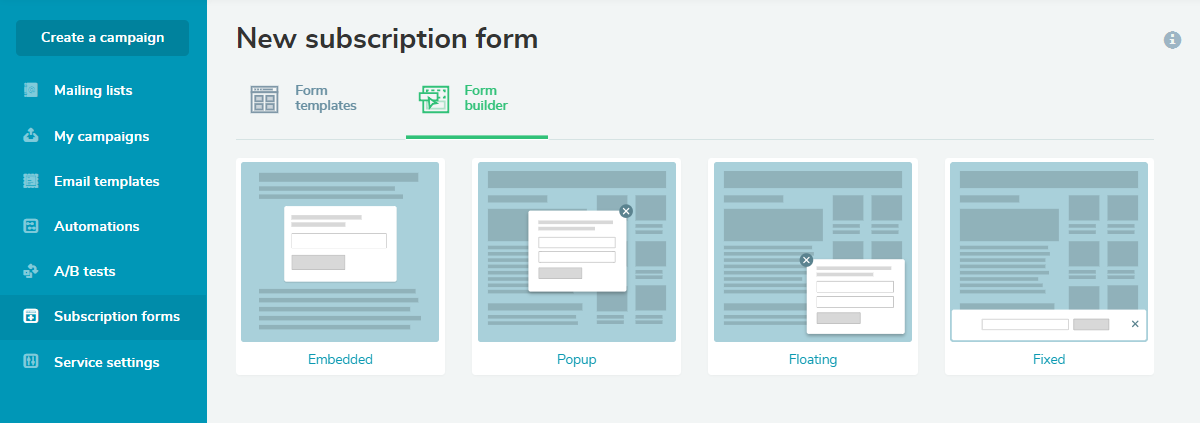
Step 3: Design your subscription form
Drag the necessary elements from the left to your form, and edit them in the right panel. You can add as many fields as you need, use checkboxes, radio buttons, drop-down menus, etc. Change style, colors, font, images, background color, etc.
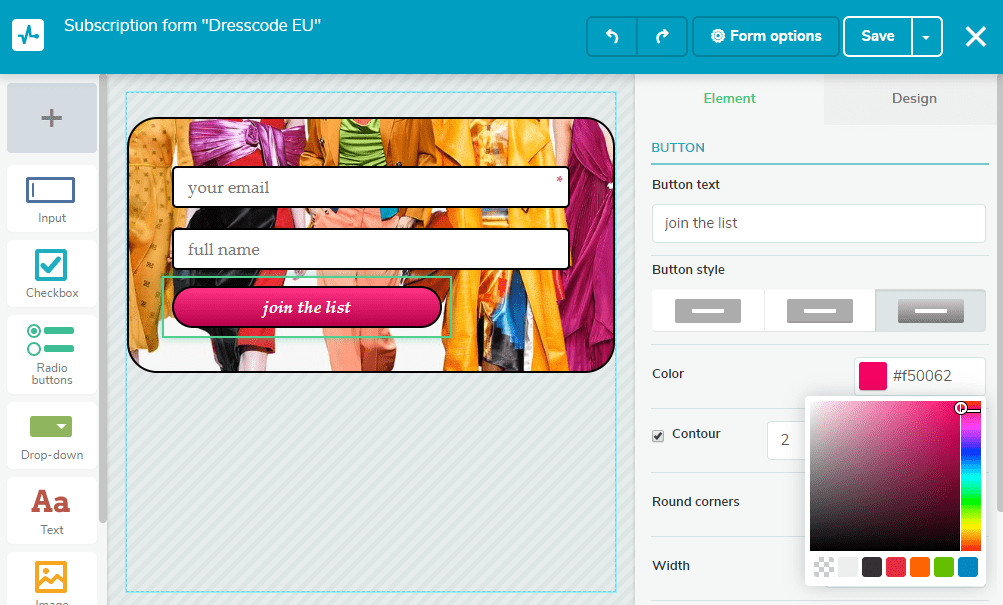
Step 4: Select the necessary subscription method
In the upper right corner, click “Form Options” and go to “Opt-In Settings.” Here you should enable the corresponding setting by turning the toggle switch to the ON position. So, after subscribing, users will receive a confirmation email.
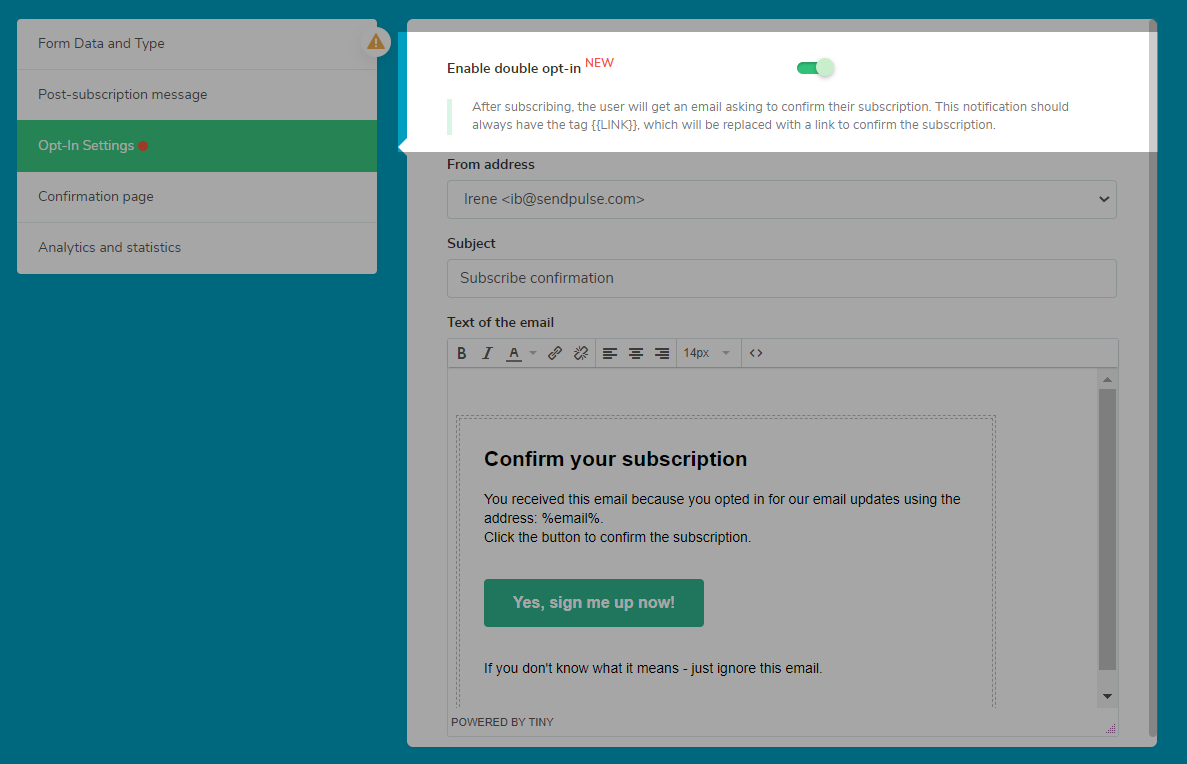
After that, you can edit the text of your confirmation email below.
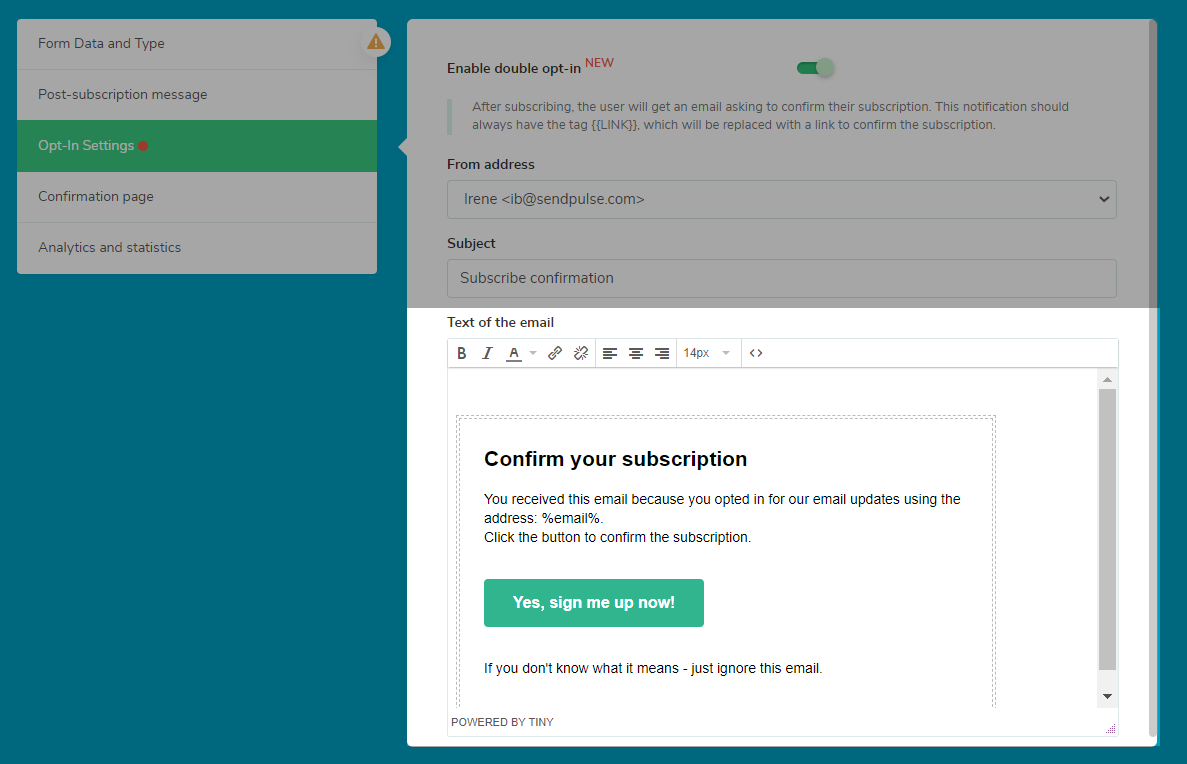
If you decided to use a single opt-in method, you don’t need to change the settings since it is configured by default.
In our knowledge base, you’ll find a step-by-step guide to creating a subscription form.
FAQ
💙 Does SendPulse support a double opt-in subscription approach?
Double opt-in is a must if you collect subscribers with SendPulse’s subscription forms. At the second stage of a double opt-in, SendPulse automatically sends a subscription confirmation email. A click on a confirmation link proves their email addresses active. Register with SendPulse to send free email marketing campaigns for your double opt-in mailing list.
⚖️ Why is double opt-in good for business?
A double opt-in subscription ensures that you only communicate with engaged users. As a result, more people will open and click your emails, improving your sender reputation and email deliverability. Sure, it takes more time to collect a double opt-in mailing list compared to a single opt-in, but it returns better relationships with your audience and more loyal customers. Register with SendPulse and use free double opt-in subscription forms to your advantage.
🤔 Why do some companies avoid using double opt-in?
Because they want fast profits and don’t want to build long-lasting relationships with their audience. It takes more time to collect a double opt-in mailing list, but it ensures you only communicate with engaged users. They only harm your sender reputation as they are more likely to unsubscribe or even mark your email as spam. Create double opt-in subscription forms with SendPulse free of charge.
👋🏻 How many users reply to the subscription confirmation email?
61% of people never open a subscription confirmation email. It seems they don’t want to become part of your community. Having unengaged users on your list will only harm your sender reputation. Double opt-in is an essential approach for building long-lasting relationships with your subscribers.
Last Updated: 22.03.2023




or